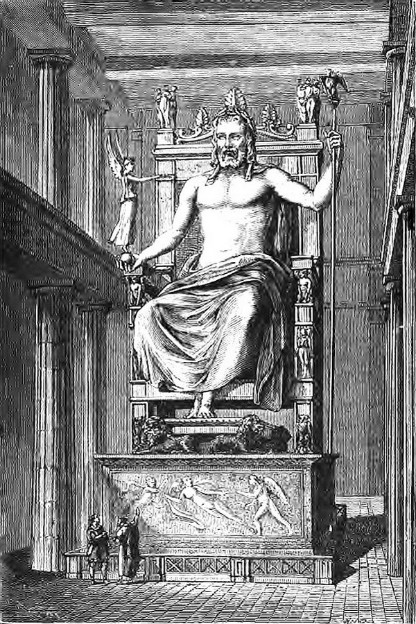
The Statue of Zeus was built by the famous sculptor Phidias for the Temple of Zeus at Olympia. The chryselephantine statue was 39 ft. (12 m.) tall and made of ivory and gold-plated bronze. No copies of it have survived, although versions have survived on coins and engraved gems. The traveler Pausanias has, however, recorded its description. The sculpture was wreathed with olive shoots and seated on a cedar throne, inlaid with ivory, gold, ebony, and gems. Zeus held a crowned chryselephantine Nike in his right hand, and a metal scepter with an eagle perched on it.
The temple used a basic Grecian design. It was built on a raised, rectangular platform and had thirteen columns supporting the roof on the sides and six on either end. The roof gently peaked and the pediments were filled with sculptures. Underneath the pediments and above the columns were more sculptures that depicted the Labors of Hercules.
It was eventually destroyed in either a fire when the Byzantines destroyed the temple in 394 or was stolen and wound up in the Lauseion, where it was still destroyed by fire in 462. In 1829, the outlines of the temple and fragments of the sculpture showing the Labors of Hercules were discovered and in 1875 most of the buildings were mapped out and more statuary was discovered. In 1954 - 1958, Phidias' workshop was rediscovered and this discovery has allowed archaeologists to date the statue and figure out how it was made.